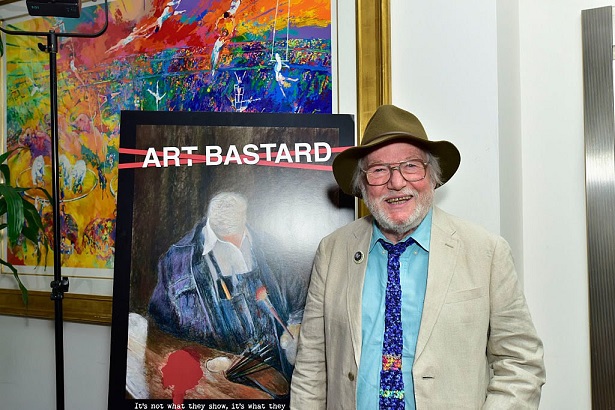Robert Cenedella claims that museums are part of a conspiracy to suppress prices for all but a small group of artists.
Robert Cenedella at the premier of Art Bastard in New York City. Photo: Eugene Gologursky/Getty Images for CAVU Pictures & Concannon Productions.
The artist Robert Cenedella thinks the art world is rigged—and he is suing five of New York’s largest museums for a combined $100 million to prove it.
The artist filed a class action lawsuit in federal court in New York yesterday against the Metropolitan Museum of Art, the Whitney Museum of Art, the Museum of Modern Art, the Solomon R. Guggenheim Museum, and the New Museum. He alleges that the institutions are part of a conspiracy to eliminate competition in the art market by showing a small group of predetermined names.
Only these select few artists have access to the “lucrative world of art dealers, auction houses, and collectors,” while artists like Cenedella have been unfairly been “shut out,” according to the suit, which was first reported by Bloomberg.
Cenedella, a teacher at the Art Students League in New York and the subject of the 2015 documentary Art Bastard, is known for creating works—like a painting of a crucified Santa Claus—that intentionally court controversy. He lacks gallery representation and his work is not owned by any American museum. “I thought I had enough skill to make it on my own—I no longer believe that,” Cenedella tells artnet News. “The art world is the last unregulated business in America.”
The lawsuit does not offer any specific evidence of collusion among museums, but cites a 2015 investigation by this reporter for The Art Newspaper, which found that almost one-third of solo museum exhibitions in the US are of artists represented by one of five mega-galleries (Gagosian, Marian Goodman, Pace, David Zwirner, and Hauser & Wirth).
Although Cenedella does not appear to consider the lawsuit a performance in and of itself, he doesn’t necessarily expect to win the quixotic legal battle either. (His personal lawyer declined to take the case “because he said he didn’t want to lose his job,” Cenedella says. The artist shopped the suit around to two lawyers before he found one to take it on.)
Nevertheless, Cenedella hopes the lawsuit will inspire “increased dialogue about how the system works.” (So far, at least one boldface name is listening: On Twitter, the artist Richard Prince said the case was “interesting,” but that Cenedella “should look into the auction houses and a bunch of collectors out there to really support his beef.”)
The artist understands that many might dismiss the exercise as sour grapes, but “I don’t think I’m paranoid,” he says. “I don’t think the best contemporary artists are being shown in museums… and I thought a lawsuit would get their attention.”
All five museums declined to comment on the case.
